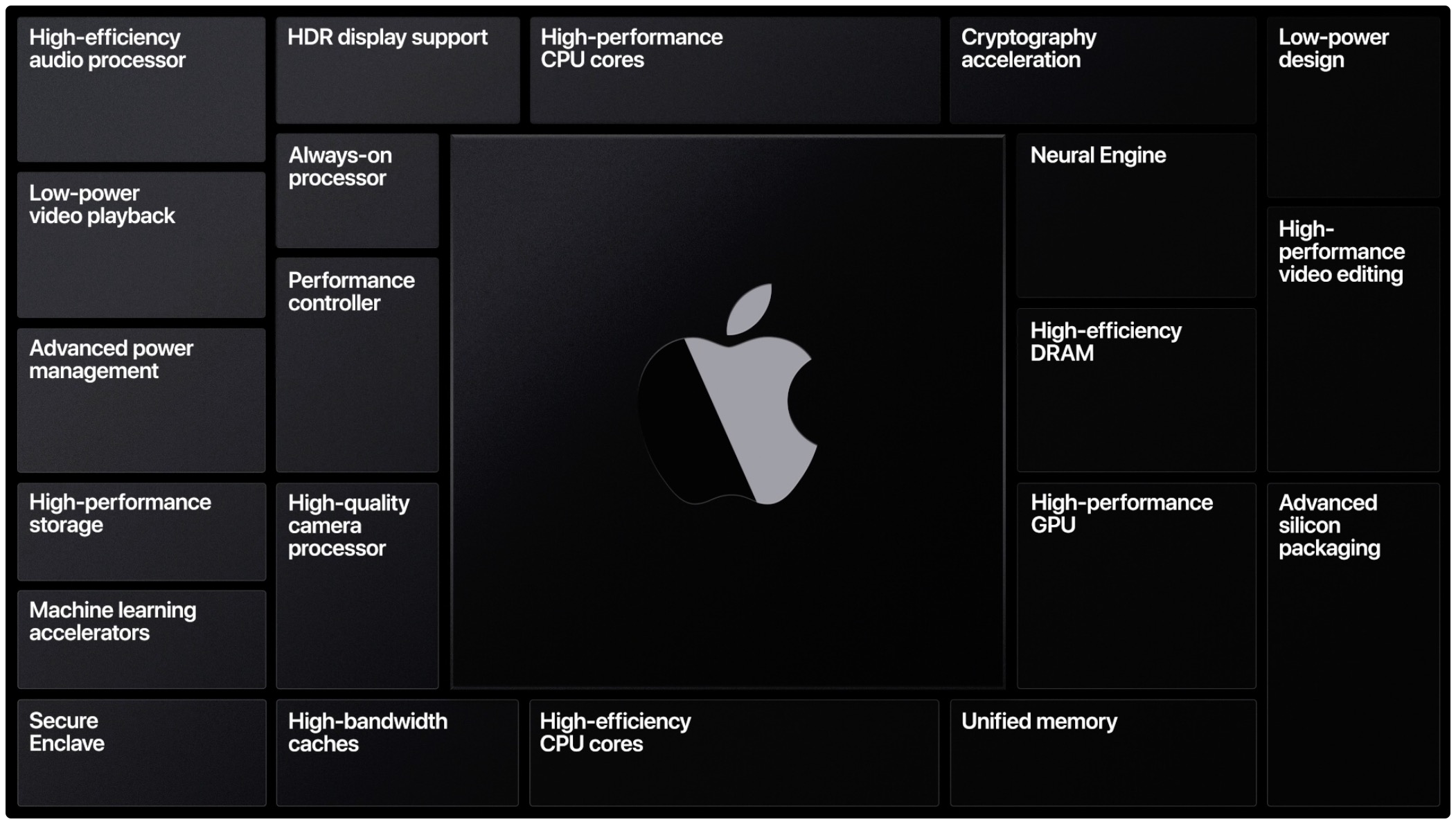
The Mac is transitioning to Apple’s own silicon, CEO Tim Cook announced at the WWDC 2020.
So, why Apple silicon for Macs?
According to Cook — and while we’re at it, let’s point out that Steve Jobs himself used the same argument when announcing a move from PowerPC to Intel processors — shifting to ARM is necessitated by the fact that Intel’s CPU roadmap has become weak and unreliable.
Having its own CPU optimized for the specifics of the Mac platform, developed on its own schedule, permits Apple to design Macs without waiting for Intel to deliver its innovations.
And whereas CPU performance has increased by a factor of hundred since the very first Apple-designed A4 chip that powered the original iPad and the iPhone 4 (GPU performance in the latest Apple chips is up to a thousand times faster than the GPU in the A4 chip).

And now, Apple is applying this knowledge to building its own desktop chips that not only deliver faster performance, but also better performance per watt ratio.
This’ll give Macs a whole new level of performance thanks to own GPUs and capabilities like the Neural engine for accelerated machine learning and the Secure Enclave that’s already used in some Mac models for flash storage encryption, Touch ID, Apple Pay and more.
But how will Apple make this transition easier on developers?
According to software engineering head Craig Federighi, all of Apple’s own apps are being ported over to the ARM instruction set. Developers can do the same with Xcode for their own apps in “a matter of days”, he said.

Not only are Apple’s stock apps in macOS 10.16 Big Sur running natively on these upcoming ARM Macs, but also its most-demanding pro apps such as Final Cut Pro and Logic Pro. In fact, Microsoft Office apps like PowerPoint are fully optimized for ARM Macs and Adobe has also updated its Creative Cloud suite to support ARM chips.
And to deliver apps for ARM Macs without inconveniencing users, Apple has developed the second-generation universal app platform with a single binary containing code for both Intel and Apple chips based on ARM technology similar to how the original universal app platform permitted first apps during the PowerPC → Intel transition to support both CPU platforms.
And to ensure users can run apps that haven’t been updated for the ARM instruction set, Apple is resurrecting its Rosetta technology. Introducing Rosetta 2, which translates the apps as soon as you install them for maximum performance, but it can also do that on-the-fly for things that Rosetta didn’t even support, such as plug-ins.
And to help developers make their apps universal, Apple has released or will make accessible a bunch of software tools, documentation and special developer hardware that comes in form of a Mac mini featuring the iPad Pro’s A12Z Bionic chip with 16GB RAM and 512GB SSD.
And last but not least, let’s talk timeframes.
First ARM-ed Mac is coming down the pike later this year, Cook said without revealing exact model. The transition will complete over the course of two years, he added, but in the meantime Apple is going to continue both ARM and Intel-powered Macs.
In fact, as Craig said, Apple is “really excited about” some of the Intel-powered Mac models the company has in its pipeline. By the way, Apple shipped more than two billion system-on-a-chip products in the past ten years.
And that’s all you need to currently know about Apple’s transition to ARM.
What do you think?
Let us know in the comments!